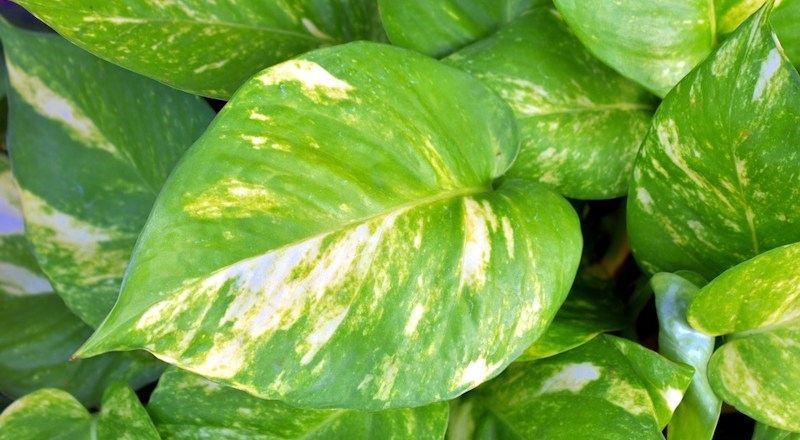Houseplants for Health Benefits
Everyone’s talking about the benefits of growing houseplants to clean the air in our homes. Because the population is increasingly spending more time indoors, it is interesting to know the ability of plants to clean the air. We know that plants convert carbon dioxide into oxygen during photosynthesis through their leaves and stems (which in itself is a good thing) – but also, studies have shown that certain plants may be more effective at absorbing unpleasant harmful volatile organic compounds (VOC’s – found in many common, man-made products like cleaning detergents, carpet and paint) more than others.
Also, the physical health benefits of having houseplants mean that by having better air quality, health issues such as breathing problems, high blood pressure and tiredness, may be reduced.
Plus, it is also a fact that being surrounded by, and looking after, living things (such as the calming greenery of foliage plants) makes us feel more positive and affects our mental wellbeing.
We have come up with our top ten “easy-to-grow” houseplants for clean air –most of which are usually available at our garden centres:
- Dragon tree- Dracaena marginata - This ever-popular foliage plants is one of the easiest to grow. It has narrow, arching leaves which has reddish edges. Place in bright but indirect light. Can grow into a tall plant around 1.8 metres.
- Money plant, golden pothos or Devil’s ivy- Epipremnum aureum - Available in a small pot and grown as a trailing plant, or larger specimen trained up on a pole, as it has aerial roots. Green and gold variegated heart-shaped leaves. Able to withstand shady conditions as long as it isn’t kept too wet.
- Snake plant or Mother-in-laws tongue - Sanseveria trifasciata - One of the toughest houseplants you can grow – this plant has sword-like leaves with distinctive markings can cope with dry atmosphere, cool temperatures and shade, so is virtually indestructible! Make sure you don’t over water it and it’ll be happy in almost any conditions.
- Boston fern- Nephrolepis exaltata ‘Bostoniensis’ - This tough but delicate-looking fern was very popular in Victorian times, but is still one of the best houseplants loved for its graceful arching fronds. An easy fern to grow, but don’t allow the compost to dry out completely, and keep in a position with good indirect light. Regularly misting the leaves will also be beneficial.
- Rubber plant - Ficus elastica - An old favourite, the rubber plant, has come back into fashion and is very easy to keep. The traditional green-leaved type is adaptable to shady conditions although it prefers some bright but filtered light.
- Peace lily - Spathiphyllum sp - Fabulous flowering and foliage houseplant which is can last for years – the peace lily is a real winner. Keep it out of direct sunlight in summer but it won’t mind being nearer a window in the winter. Dislikes getting too dry – but don’t overwater! Easily one of the most popular houseplants.
- Chinese evergreen - Aglaoenema ‘Silver Queen’ - Very tolerant of lower light levels, the Aglaoenema has striking foliage with attractive markings. It does need some warmth in winter and prefers semi-shade or bright light, but not direct sunlight.
- Spider plant -Chlorophytum comosum - An oldie but a goodie – the spider plant has attractive, arching leaves and tiny white flowers. It is so easy to care for, being unfussy if in sun or shade, cool or warm conditions. The tiny plantlets on its leaves will produce roots if kept in a glass of water. Very forgiving, wherever you place it indoors.
- Cast Iron Plant - Aspidistra elatior - The aspidistra, or castor oil plant is another Victorian favourite which can survive in cool, darkish conditions (hence its name!). It will hate being overwatered but can withstand being dry for a while. Foliage will get scorched in bright sunlight
- Kentia palm or flat palm - Howea forsteriana - This is an elegant palm with long fronds and is very tolerant of shady conditions. Keep on the drier side in winter, and remove excess dust from leaves as necessary.








